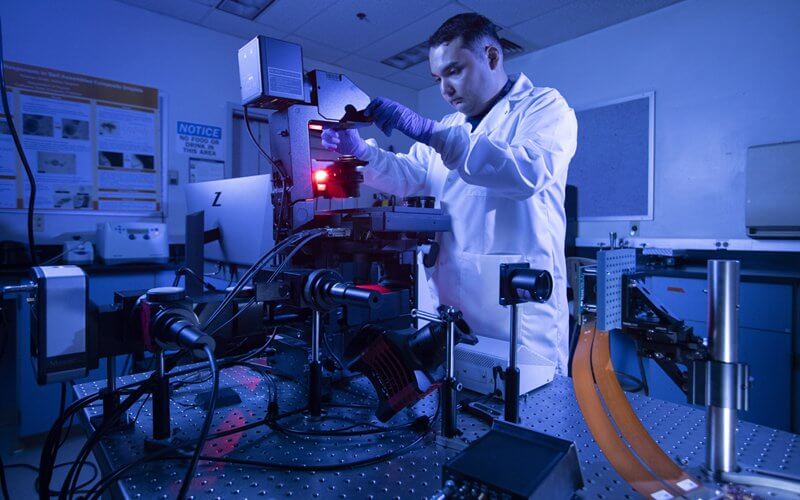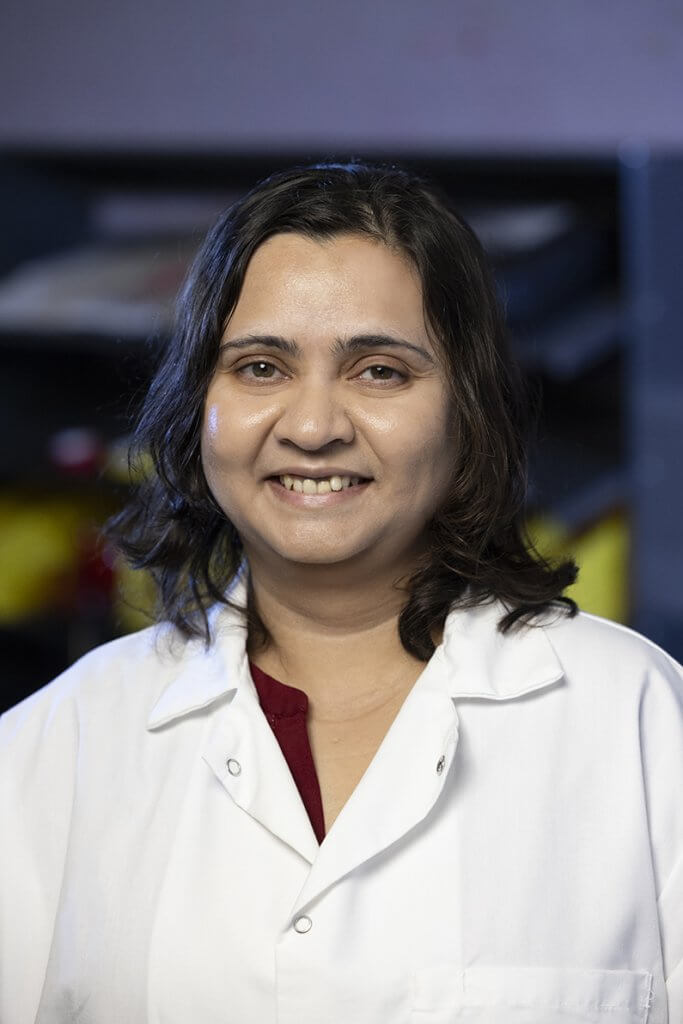
As an undergraduate researcher, Jose Lopez-Ceja worked on turning science fiction microbots into reality like the Disney animated film “Big Hero 6” he watched as a child.
Microbots are tiny robots made of microscopic components that self-assemble into any desired structure and disassemble when the structure is no longer needed.
During his Cal State Fullerton education, Lopez-Ceja combined his knowledge of mechanical engineering and physics to develop microbots based on controlling the motion of small particles in fluid and using the power of light.
“This research deals with creating microscopic robots, or microbots, that can potentially grip and move tiny objects in fluids,” said Lopez-Ceja, a Class of 2025 first-generation graduate who earned a bachelor’s degree in mechanical engineering.
Lopez-Ceja explained that the research introduces an affordable way to create microbots, which can help doctors, scientists and engineers do work that requires precise and automated control in medicine or other advanced fields.
“Instead of using expensive, complex tools to build these microbots, we’re exploring using patterned LED light to help tiny particles come together to form small robots that can change their shapes on demand,” he said.
Nabila Tanjeem, assistant professor of physics, is directing the research project, funded by a nearly $200,000 National Science Foundation grant.
Under Tanjeem’s guidance, Lopez-Ceja gained hands-on experience in a chemical laboratory, including using microscopy equipment, and became the first author on a research publication. The interdisciplinary research was published in the peer-reviewed Journal of Physical Chemistry B and was the cover article.

Co-authors of the paper are Tanjeem; Meng Shen, assistant professor of physics; alumni Shirlaine Juliano ’23 (B.S. biological science), currently a postbaccalaureate researcher at the University of San Diego; and Sean Machler ’23 (B.S. electrical engineering), who works at Lockheed Martin. Other co-authors are Class of 2025 grads Stephen Smith and Gargi Mansingh, who earned master’s degrees in physics, and Vanessa Flores (B.S. mechanical engineering).
Lopez-Ceja’s research experience helped him secure a summer internship at NASA’s Glenn Research Center, near Cleveland, Ohio. The internship is made possible through the university’s SpaceIgnite Center for Advanced Research-Education in Combustion, supported by a NASA grant to prepare students for the aerospace industry.
At NASA, he’s working 40 hours a week through early August, focusing on high-pressure combustion research for rocket propulsion. So far, he’s learning about technologies used in past and future space missions and witnessed an International Space Station experiment.

“Jose’s technical skills are already at the level of a Ph.D. student. He’s solved multiple problems in his experimental and computational work all by himself,” Tanjeem said. “His solutions were so innovative that I was confident he would show me something interesting whenever given a new task.”
Tanjeem encouraged Lopez-Ceja to present his project at conferences, including the APS Global Summit, and join campus research programs. He was awarded an Undergraduate Research Opportunity Center fellowship and participated in the Summer Undergraduate Research Academy.
A transfer student from Santiago Canyon College, where he earned an associate degree in mathematics, Lopez-Ceja gained support through Project RAISE. The program focuses on increasing the number of transfer students who complete bachelor’s degrees and enter STEM careers.
Interested in space exploration and mysteries of the universe since childhood, Lopez-Ceja was a member of the Titan Rover team. The student-led project designs and builds a Mars rover for collegiate competition.
Lopez-Ceja’s career goal is to become a NASA engineer.
“I hope to one day work on a project that will be sent to the cosmos or another planet,” he said.